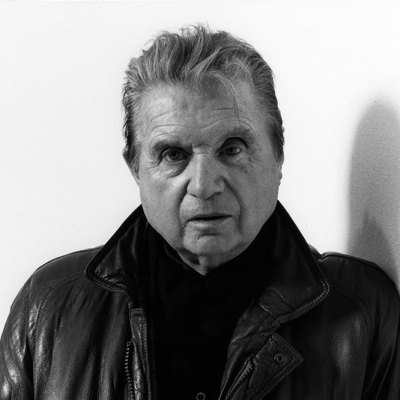From the May 2024 issue of Apollo. Preview and subscribe here.
In January 1955 the first retrospective exhibition of Francis Bacon’s paintings opened at the Institute of Contemporary Arts in London. The selection had been made by the gay arts patron Peter Watson, and among the 14 pictures on display was Two Figures in the Grass, painted the previous year, in which a pair of naked men are depicted, one lying on top of the other. Two visitors to the exhibition were so affronted by this image that they made a formal complaint to the police, but officers dispatched to the ICA to investigate decided that the men were merely wrestling and took no further action. Although they would not have known it, the policemen were partly right, since both this painting and its companion piece, Two Figures (1953), in which one man straddles another on a bed, were based on pictures of naked wrestlers taken by the 19th-century photographer Eadweard Muybridge as part of his project to illustrate human and animal locomotion. Bacon had, however, transformed these images to suggest something a good deal more intimate.
It could be argued that Bacon’s figures are both wrestling and having sex. Christopher Isherwood, who was in Berlin not long after Bacon in the late 1920s, recalled that sex with his working-class lovers there often started out as a wrestling bout. Furthermore, Bacon had painted both pictures during the most intense period of his relationship with Peter Lacy, a former test pilot whom he would later describe as the love of his life, and this was a relationship characterised by physical and psychological violence. The earlier painting was known among the artist’s friends as ‘The Two Buggers’, and Bacon’s dealer Erica Brausen, worried she could be prosecuted for obscenity by exhibiting it at her Hanover Gallery, confined it to an upper floor. It was subsequently bought by Lucian Freud (who hung it at the foot of his bed) and was not seen again in public until 2017.
The ICA, therefore, was taking a considerable risk in exhibiting a painting as unapologetically queer as Two Figures in the Grass, especially since it did so at a time when homosexual acts were both illegal and causing a good deal of public concern. The establishment in August 1954 of the Wolfenden Committee to investigate the criminal and social aspects of homosexuality meant that a subject hitherto little discussed had been forced on people’s attention, with tabloid newspapers frequently warning their readers that a change in the law would lead to the further ‘spread’ of homosexuality and pose a grave moral threat to society.
Two Figures in the Grass (1954), Francis Bacon. Private collection

In the past, artworks depicting contemporary homosexuality (rather than scenes from history or classical mythology) tended, of necessity, to be coded, focusing more on hidden or suppressed desire than its realisation. In contrast, Bacon’s paintings are shockingly confrontational, and it seems altogether appropriate that Two Figures in the Grass was shown at the ICA alongside two versions of his ‘screaming popes’.
The painting is in fact considerably removed from Muybridge’s original images of wrestlers, and there is a distinctly sensual focus on the buttocks and extended leg of the man who lies on top. Bacon felt that Michelangelo was just as much of an influence on his depictions of the male form as Muybridge. ‘I perhaps could learn about positions from Muybridge,’ he said, ‘and learn about the ampleness, the grandeur of form, from Michelangelo, [who] made the most voluptuous male nudes in the plastic arts.’ The al fresco setting of the painting is unexpected, and it may not be altogether fanciful to see this as a nod to the many gay men of the period who were obliged to meet and have sex in the after-hours darkness of London’s parks and other open spaces. At the same time, the grass appears to be enclosed, the striped backdrop and the thick black horizontal across the bottom of the painting suggesting a stage setting. This might imply that, as in a theatre, we are being invited to witness this spectacle, which makes us less like people who have stumbled accidentally across a coupling on Hampstead Heath than spectators who are actively colluding in what is taking place.
This in itself would have been provocative, though it is doubtful that Bacon, who had a fine disregard for legal constraints, intended the painting as a contribution to the debate about changing the law. The exhibiting of Two Figures in the Grass in 1955 could nevertheless be seen as a direct challenge to those many people who felt that, rather than being openly discussed, homosexuality should be swept out of sight.
From the May 2024 issue of Apollo. Preview and subscribe here.


